It looks like you're using an Ad Blocker.
Please white-list or disable AboveTopSecret.com in your ad-blocking tool.
Thank you.
Some features of ATS will be disabled while you continue to use an ad-blocker.
share:
a reply to: ignorant_ape
I would say its way to small to fell a "tree" and is more likely a splitting wedge,going by the flared out contour from the cutting face going up the head,less lateral contact with the blade on the wood after the strike will help avoid getting jammed . wedge or a kids toy,no wear on it by the looks.
I would say its way to small to fell a "tree" and is more likely a splitting wedge,going by the flared out contour from the cutting face going up the head,less lateral contact with the blade on the wood after the strike will help avoid getting jammed . wedge or a kids toy,no wear on it by the looks.
edit on 5-5-2017 by hiddenNZ because: Yep
Obviously it is an Hobbit axe
Then the size fit's.. ( And the strange tunnels all under Europe as well ; )
Then the size fit's.. ( And the strange tunnels all under Europe as well ; )
Utilitarian axes in the bronze age were not huge. They were used for felling trees.
Take a look at Oetzi the Iceman's ax, axes were fairly small compared to today.
Take a look at Oetzi the Iceman's ax, axes were fairly small compared to today.
Here's another article on this:
www.thehistoryblog.com...
The blog says they're hoping to return in the fall to dig again.
www.thehistoryblog.com...
The axeheads have already revealed a Kinder egg-like surprise inside: there appear to be other metal objects encased within some of them. The team will also test the objects using XRF analysis to determine what alloy they are composed of. The type of alloy will indicate whether the axes were tools used for work or if they were decorative.
The blog says they're hoping to return in the fall to dig again.
a reply to: butcherguy
yes, lets do compare to otzi's axe and other axes
Here is an example of stone age split fork hafting.
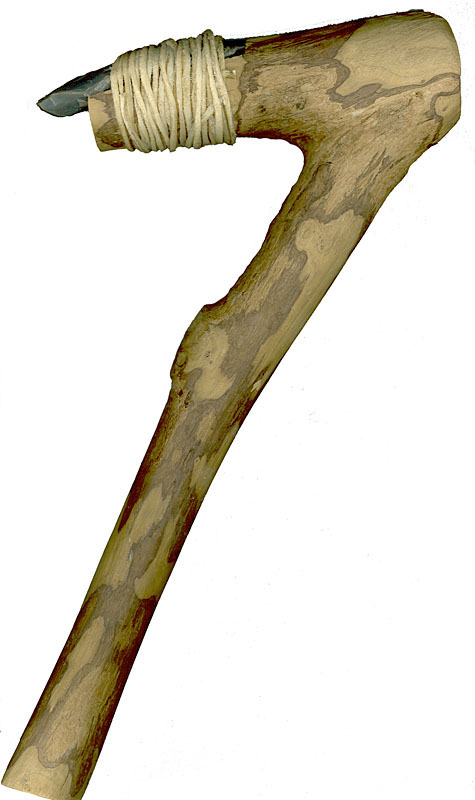 , this is a modern replica, but this style of hafting goes back to neanderthal.
, this is a modern replica, but this style of hafting goes back to neanderthal.
Here is otzi's axe, circa 3300B.C.E.,
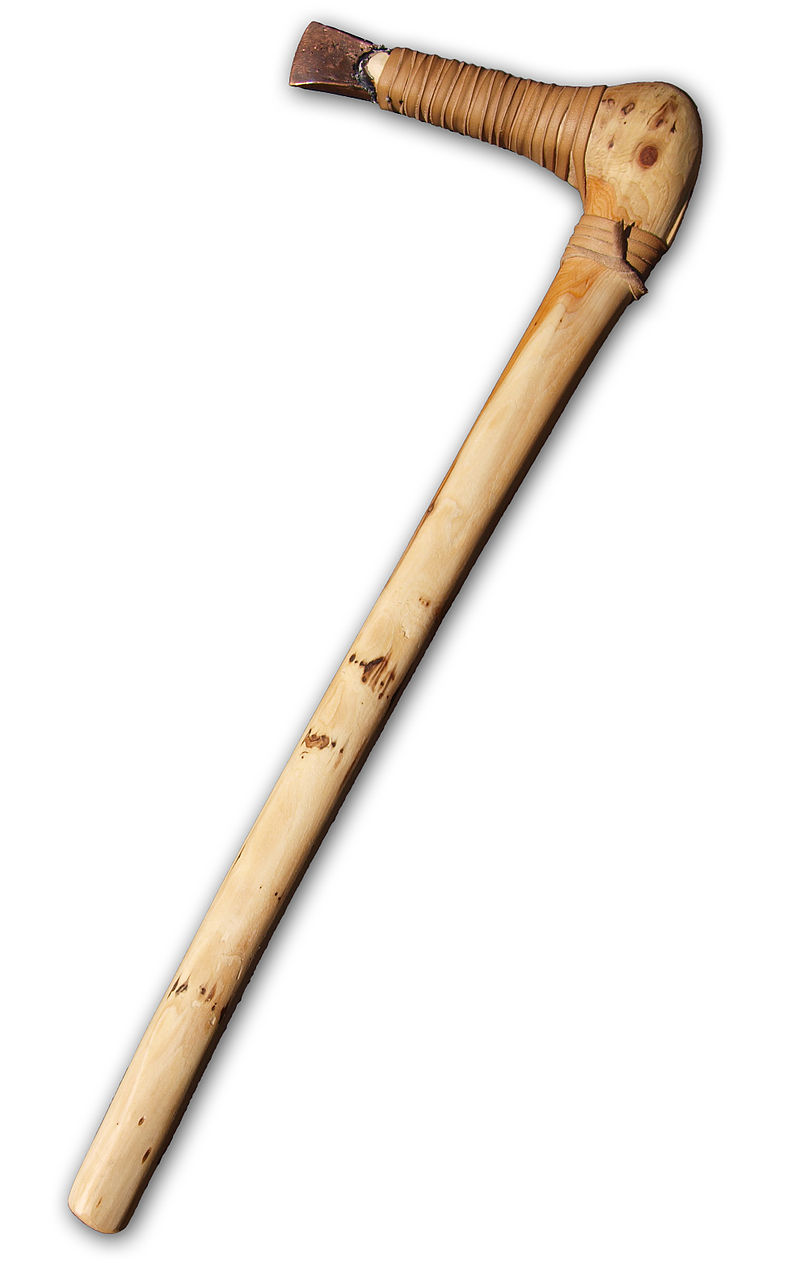
Its obvious its an adaptation of the split fork hafting to a bronze head.
Here is a modern replica of the scandanavian socket head axes,
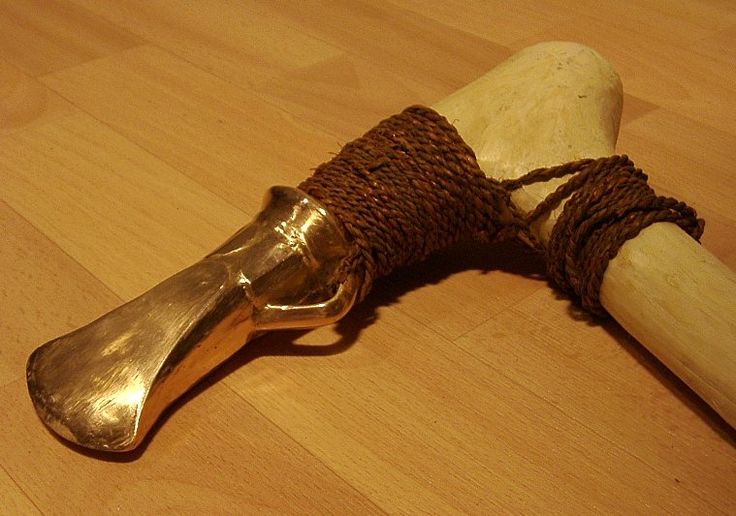 1000BCE?
1000BCE?
except they didnt get the binding quite right.
Other axes from people adjacent to the med 13th cen bce.

It seems that the socket head axe was very popular at the end of the 2nd millenia bce.
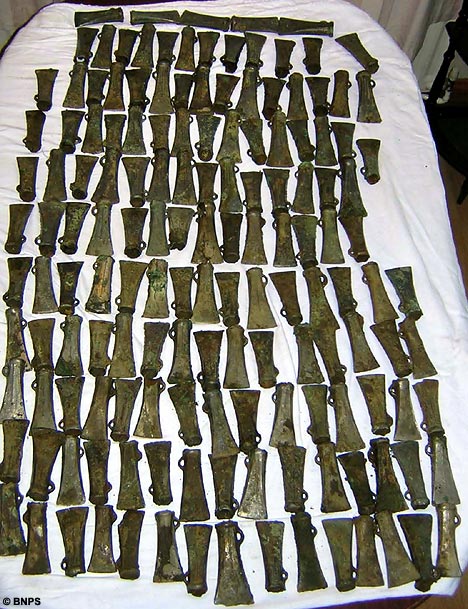
socket head axes from britain
the scandanavians were very conservative, here is an adze fro L'anse aux meadow
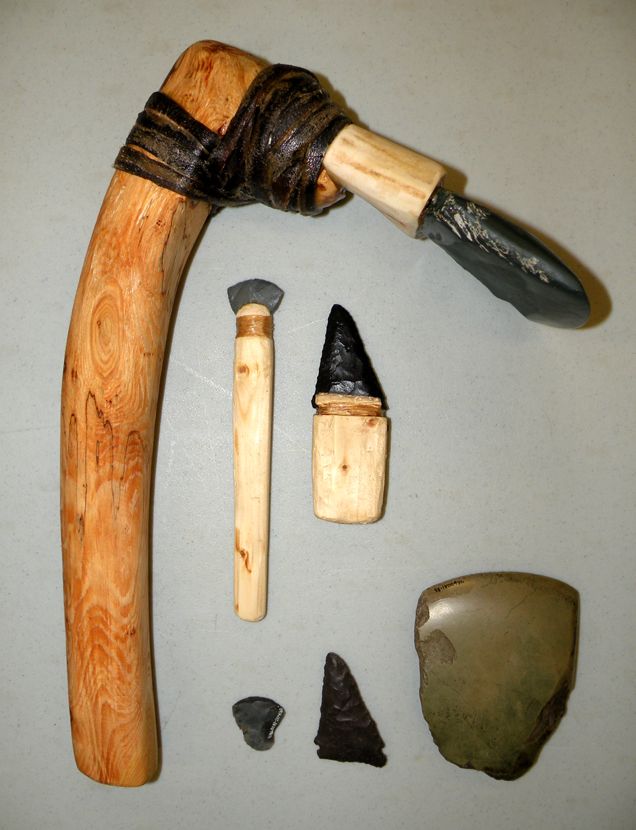
still using the same hafting method 2000 years later
yes, lets do compare to otzi's axe and other axes
Here is an example of stone age split fork hafting.

Here is otzi's axe, circa 3300B.C.E.,

Its obvious its an adaptation of the split fork hafting to a bronze head.
Here is a modern replica of the scandanavian socket head axes,

except they didnt get the binding quite right.
Other axes from people adjacent to the med 13th cen bce.

It seems that the socket head axe was very popular at the end of the 2nd millenia bce.

socket head axes from britain
edit on p0000005k55552017Fri, 05 May 2017 11:55:30 -0500k by punkinworks10 because: (no reason
given)
edit on p0000005k58552017Fri, 05 May 2017 11:58:54 -0500k by punkinworks10 because: (no reason given)
the scandanavians were very conservative, here is an adze fro L'anse aux meadow

still using the same hafting method 2000 years later
edit on p0000005k04552017Fri, 05 May 2017 12:04:04 -0500k by punkinworks10 because: (no reason given)
originally posted by: gimcrackery
Yep, and it is painted John Deere green. Go figure.
a reply to: neo96
No.
Copper patina.
he bronze age wouldn't be the bronze age if it wasn't for the the presence of bronze. But what is bronze exactly and where does it come from? Bronze is a copper alloy. The most well known bronze used in the bronze age contains of on average 90% copper and 10% tin, but the tin content can vary from just a few percent up to 20% in the extreme cases
1501bc.com...
Patina (/ˈpætᵻnə/ or /pəˈtiːnə/) is a thin layer that variously forms on the surface of stone; on copper, bronze and similar metals (tarnish produced by oxidation or other chemical processes);[1] on wooden furniture (sheen produced by age, wear, and polishing); or any such acquired change of a surface through age and exposure.
en.wikipedia.org...
This is why it's 'green'.
a reply to: CaptainBeno
More pics here:
Link


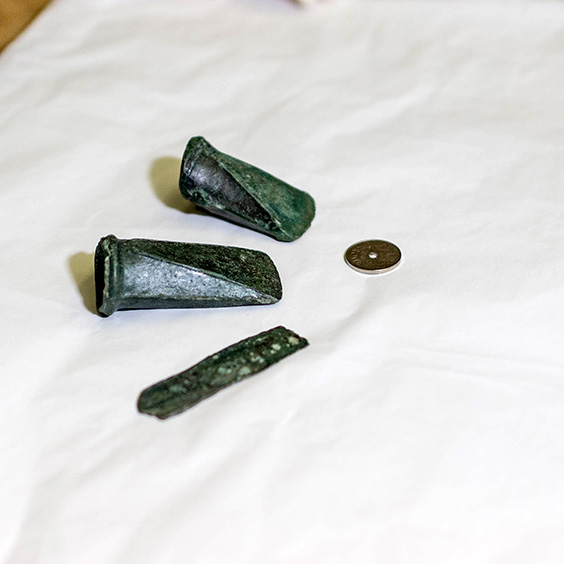

More pics here:
Archaeologists call this kind of find a hoard, when they uncover objects that have been hidden away or buried in the ground. It is still too early to say why the axes and other objects were buried 3000 years ago.
“There may have been religious reasons linked to a sacrifice, or they might have been cached temporarily, with the intention of recasting the metal later. This was a known practice in the Late Iron Age,” says Henriksen.
Link




edit on 5-5-2017 by D8Tee because: (no
reason given)
originally posted by: AdmireTheDistance
originally posted by: LadyGreenEyes
a reply to: CaptainBeno
Nice!! I'd bet you could still chop down a tree with that thing!! Built to last, eh??
Only if it's a really small tree.
Maybe, but the workmanship for that time period is impressive. That 's so well preserved is nice, too. Really great find!!
For the first picture: It looked like a durable industrial paint to me; that green paint. And the shape is very suspicious as its very, very fine
detailed. If its really 3000 year old then it is heck of a masterpiece.
For the other pictures; they look so cool and its really metal oxidation.
For the other pictures; they look so cool and its really metal oxidation.
edit on 7-5-2017 by belkide because: (no reason given)
originally posted by: belkide
For the first picture: It looked like a durable industrial paint to me; that green paint. And the shape is very suspicious as its very, very fine detailed. If its really 3000 year old then it is heck of a masterpiece.
Actually, it's pretty typical of fine Bronze Age work. Go through an image search of museums sometime for artifacts from that time period. You'll be blown away by the craftsmanship (which does get better in high end materials (gemstones, etc) as time goes on.)
new topics
-
HORRIBLE !! Russian Soldier Drinking Own Urine To Survive In Battle
World War Three: 44 minutes ago -
Bobiverse
Fantasy & Science Fiction: 3 hours ago -
Florida man's trip overseas ends in shock over $143,000 T-Mobile phone bill
Social Issues and Civil Unrest: 3 hours ago -
Former Labour minister Frank Field dies aged 81
People: 5 hours ago -
SETI chief says US has no evidence for alien technology. 'And we never have'
Aliens and UFOs: 7 hours ago -
This is our Story
General Entertainment: 10 hours ago
top topics
-
President BIDEN Vows to Make Americans Pay More Federal Taxes in 2025 - Political Suicide.
2024 Elections: 12 hours ago, 16 flags -
One Flame Throwing Robot Dog for Christmas Please!
Weaponry: 17 hours ago, 6 flags -
Florida man's trip overseas ends in shock over $143,000 T-Mobile phone bill
Social Issues and Civil Unrest: 3 hours ago, 6 flags -
SETI chief says US has no evidence for alien technology. 'And we never have'
Aliens and UFOs: 7 hours ago, 5 flags -
Don't take advantage of people just because it seems easy it will backfire
Rant: 17 hours ago, 4 flags -
Ditching physical money
History: 16 hours ago, 4 flags -
Former Labour minister Frank Field dies aged 81
People: 5 hours ago, 4 flags -
Bobiverse
Fantasy & Science Fiction: 3 hours ago, 3 flags -
This is our Story
General Entertainment: 10 hours ago, 3 flags -
Ode to Artemis
General Chit Chat: 13 hours ago, 3 flags
active topics
-
The Reality of the Laser
Military Projects • 40 • : Zaphod58 -
HORRIBLE !! Russian Soldier Drinking Own Urine To Survive In Battle
World War Three • 6 • : CarlLaFong -
President BIDEN Vows to Make Americans Pay More Federal Taxes in 2025 - Political Suicide.
2024 Elections • 67 • : UnderAether -
-@TH3WH17ERABB17- -Q- ---TIME TO SHOW THE WORLD--- -Part- --44--
Dissecting Disinformation • 642 • : Thoughtful3 -
Windows tracking links to WEF and more:
New World Order • 21 • : milaganenogan -
SETI chief says US has no evidence for alien technology. 'And we never have'
Aliens and UFOs • 29 • : SchrodingersRat -
"We're All Hamas" Heard at Columbia University Protests
Social Issues and Civil Unrest • 274 • : YourFaceAgain -
Manly P. Hall says Freemasonry is a religion?
Secret Societies • 21 • : SchrodingersRat -
Florida man's trip overseas ends in shock over $143,000 T-Mobile phone bill
Social Issues and Civil Unrest • 4 • : VariedcodeSole -
How ageing is" immune deficiency"
Medical Issues & Conspiracies • 28 • : SchrodingersRat
